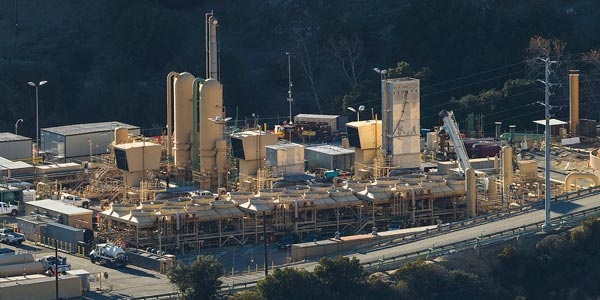By Robert Mullin
CAISO should have sufficient generation to meet peak demand this summer, although questions still linger about the adequacy of Southern California natural gas supplies in the face of a heat wave.
The ISO’s 2017 Summer Loads and Resources Assessment, which describes the grid operator’s preparedness for California’s season of peak electricity usage, paints a generally promising picture. Under “normal” summer conditions, operating reserve margins will average 19.5%, compared with the 15% required by the Public Utilities Commission.
About 52,785 MW of capacity is expected to be on hand to meet this summer’s predicted peak load of 46,877 MW, which would be 0.6% more than the weather normalized peak for 2016.
“The slight overall demand increase is a result of projected modest economic and demographic growth over 2016, tempered by utility projections of new behind-the-meter solar installations over the past year,” the report said.
Summer peak demand could spike to 48,845 MW under conditions that occur only once every 10 years, CAISO said.
The ISO expects 3,090 MW of new generation will have entered commercial operation during the 12 months leading up to this June, 2,566 MW of which is in the southern part of the system — service territories controlled by Southern California Edison and San Diego Gas and Electric.
Nearly three-quarters of the new resources consist of solar (74%), followed by natural gas (23%), storage batteries (3%) and a fraction of a percent each for hydro and biofuel.
California’s hydro conditions have “vastly improved” over last year, the ISO noted. On April 28, statewide snow water content stood at 158% of normal for April 1, typically the peak date for Sierra Nevada snowpack. The state is also experiencing a near record year for precipitation.
“This abundance of rain has nearly all reservoirs near capacity and needing to spill water to make room for spring snow runoff,” CAISO said.
But uncertainty still looms over the outlook for Southern California, where gas-fired generators confront a second summer of fuel supply restrictions stemming from the closure of the Aliso Canyon storage facility. (See Aliso Canyon Gas Restrictions Cloud Summer Outlook.)
The ISO pointed out that its analysis is a “system level” assessment and does not account for gas curtailment risks associated with emergency restrictions on the pipeline system operated by Southern California Gas, owner of the facility north of Los Angeles.
“There are limitations in attempting to shift power supply from resources affected by Aliso Canyon to resources that are not affected because of certain factors such as local generation requirements, transmission constraints and other resource availability issues,” CAISO said in its report.
A joint agency report to be released later this month will address the ongoing risks to the grid posed by continued prohibition on gas injections into Aliso Canyon. The report’s authors include CAISO, the PUC, the California Energy Commission and the Los Angeles Department of Water and Power.
Mild conditions and a series of temporary ISO market measures helped the region’s grid to weather last summer without any major incidents related to constrained gas supplies. FERC last December approved an ISO proposal to extend those measures through November 2017. (See FERC OKs One-Year Extension for CAISO’s Aliso Canyon Gas Rules.)
The ISO last winter also said it would adopt a recently approved West-wide reliability measure to help ensure that it has sufficient capability to transmit power into Southern California via the Path 26 transmission line when needed. The new measure approved by Peak Reliability — the West’s reliability coordinator — allows a system operator to selectively relax a transmission network’s seasonal performance standards in response to “credible multiple contingences” under emergency conditions. (See CAISO to Rely on New Emergency Measure to East Path 26 Transfers.)




